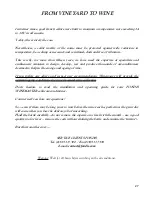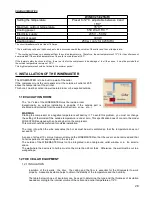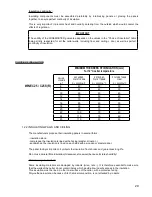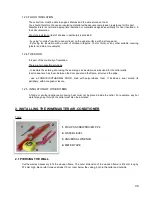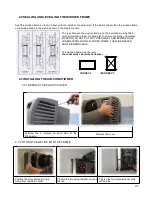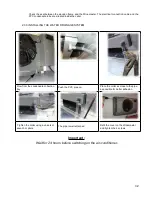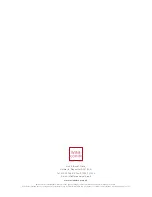
29
Insulation continuity :
Insulating components must be assembled preferably by interlocking panels or glueing the panels
together, to ensure perfect continuity of insulation.
This is very important: it prevents heat and humidity entering from the outside which would counter the
effects of regulation.
CHOICE OF INSULATION
MINIMUM THICKNESS OF INSULATION (mm)
for 12°C cellar temperature
CELLAR
VOLUME
(m
3
)
EXPANDED
POLYSTYRENE
O
= 0.044W/m°C
EXTRUDED
POLYSTYRENE
O
= 0.030W/m°C
POLYURETHANE
FOAM
O
= 0.025W/m°C
WINE C25 / C25 S(R)
6
40
30
30
8
50
40
30
10
60
40
40
12
70
50
40
14
70
50
40
16
80
60
50
18
90
60
50
20
90
70
60
22
100
70
60
24
110
70
60
25
110
80
60
1.2.2 INSULATING WALLS AND CEILING
The manufacturers propose their insulating panels in several forms:
- insulation alone
- complexes: the insulation is lined with a facing (plaster, mineral…)
- sandwiches: the insulation is lined on each side with a wooden or plaster panel.
The panel facing is important:
it protects the insulation from shocks and guarantees long life.
Do not use mineral fibre insulation (Glasswool, stonewool) because it stores humidity!
Protection against rodents
Some insulating materials are damaged by rodents (mice, rats…). It is therefore essential to make sure
that the walls of the cellar do not contain holes which would allow rodents access to the insulation.
This insulation must be lined, on the inner surface of the cellar, with a protective facing.
Polyurethane insulation, because of its chemical composition, is not attacked by rodents.
IMPORTANT
The validity of the WINEMASTER guarantee depends on the values in the "Choice of insulation" table
being strictly respected, for all the cellar walls, including floor and ceiling + door, as well as perfect
continuity of insulation.



